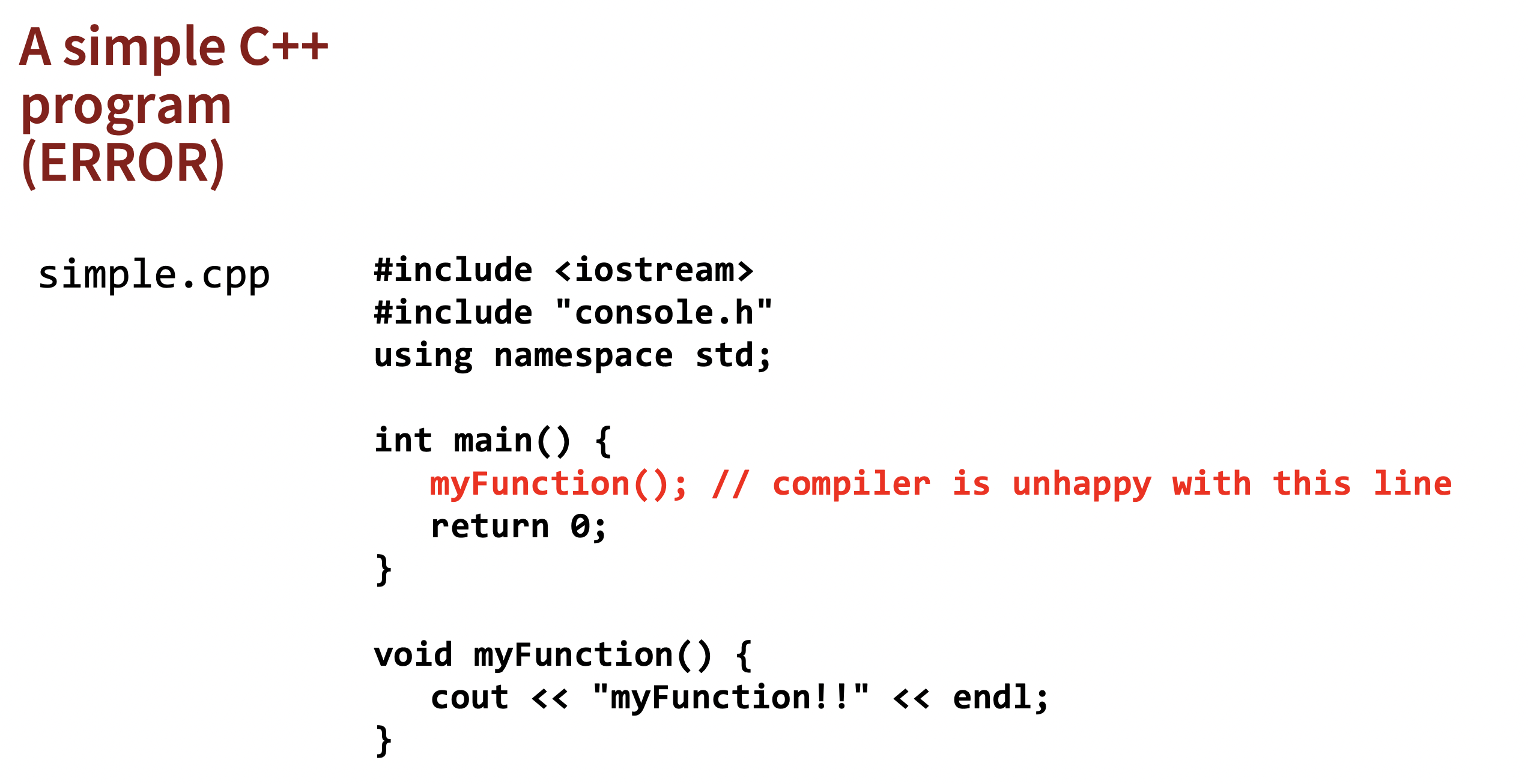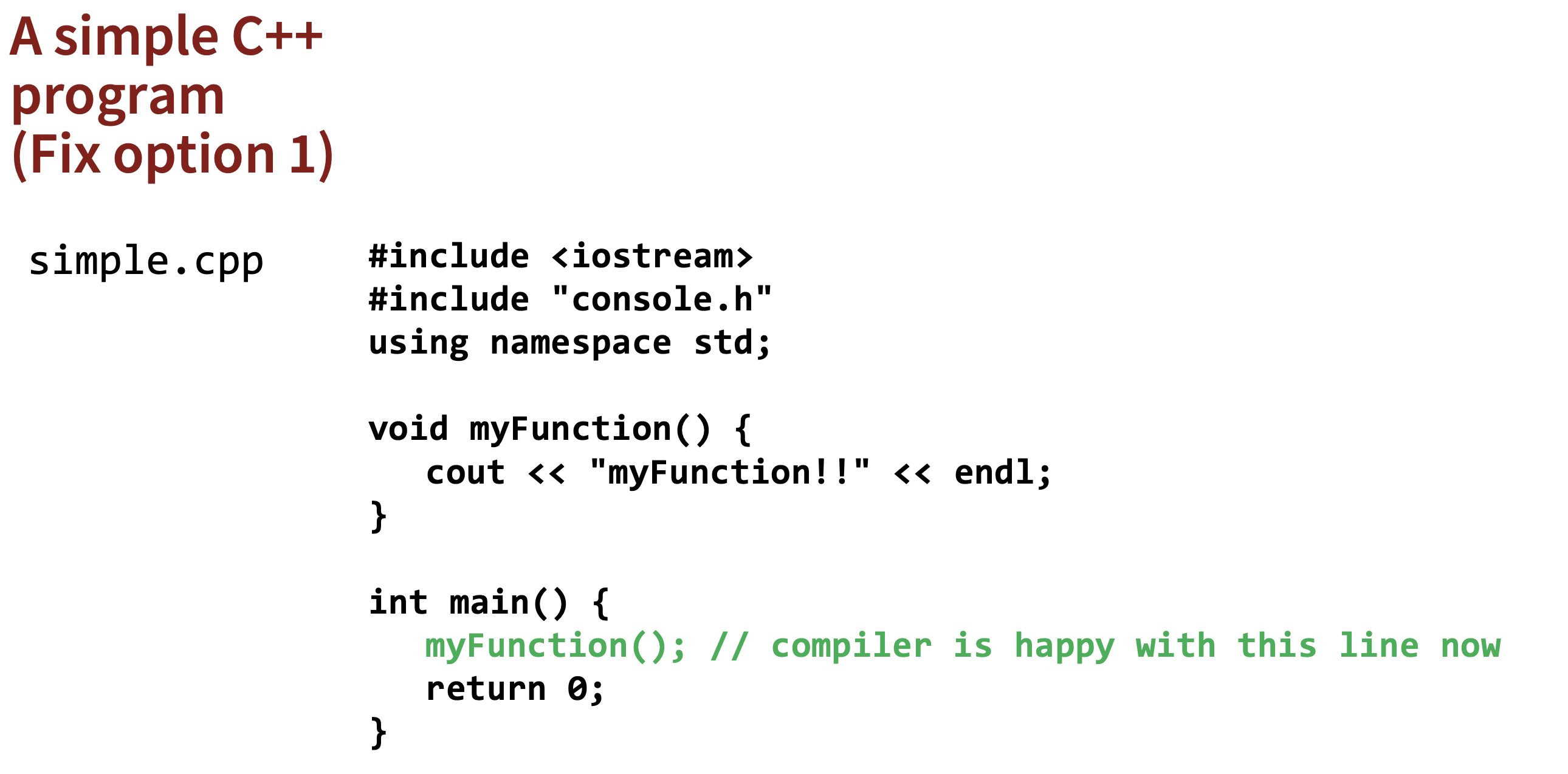02 - Functions
functions



Thinking Recursively
Solving a problem with recursion requires two steps.
- First, determine how to solve the problem for simple cases. This is called the
basecase. - Second, determine how to break down larger cases into smaller instances. This is called the
recursivestep.
Summing Up Digits

iteratively
int sumOfDigitsOf(int n){
int result = 0;
while (n > 0){
result += (n % 10);
n /= 10;
}
return result;
}
int main() {
int n = getInteger("Enter an integer: ");
int digitSum = sumOfDigitsOf(n);
cout << n << " sums to " << digitSum << endl;
return 0;
}
recursively
int sumOfDigitsOfByRecursion(int n){
if (n < 10){
return n;
} else {
return sumOfDigitsOfByRecursion(n / 10) + (n % 10);
}
}
int main() {
cout << "Summing up digits by recursion" << endl;
int n = getInteger("Enter an integer: ");
int digitSum = sumOfDigitsOfByRecursion(n);
cout << n << " sums to " << digitSum << endl;
return 0;
}
Factorials
- The number
n factorial, denotedn!, is n × (n – 1) × ... × 3 × 2 × 1
int factorial(int n){
if (n == 0) {
return 1;
} else {
return n * factorial(n - 1);
}
}
int main(){
int num = getInteger("Enter a integer: ");
int factorialOfIt = factorial(num);
cout << "Factorail of " << n << " is: " << factorail << endl;
return 0;
}
Digital Roots
- The
digital rootis the number you get by repeatedly summing the digits of a number until you’re down to a single digit.
Q: What is the digital root of 5?
A: 5 is a single digit, so the answer is 5.
Q: What is the digital root of 27?
A: 2 + 7 = 9.
The answer is 9.
Q: What is the digital root of 137?
A: 1 + 3 + 7 = 11.
1 + 1 = 2.
The answer is 2.
int digitalRoot(int n){
if(n < 10) {
return n;
}
else {
return digitalRoot(digitalRoot(n / 10) + (n % 10));
}
}
int main(){
int num = getInteger("Enter a integer: ");
int result = digitalRoot(num);
cout << "Digital root of " << n << " is: " << result << endl;
return 0;
}
Reverse a string
recurcively
string reverse(string s){
if (s.substr(1) == ""){
return s;
} else {
return reverse(s.substr(1)) + s[0];
}
}
int main(){
string s = getLine("Enter a string that you wanna reverse: ");
string reversed = reverse(s);
cout << "Reversed of " << s << " is: " << reversed << endl;
}
Parameter Passing in C++
General principle: When passing a string into a function, use pass-by-reference unless you actually want a copy of the string.

"Pass by value" (default behavior of parameters)
- The function
twiceOftakes the value of main’s variableaas input, but the change intwiceOfonly happens to a local copy nameda.
int twiceOf(int a){
return a *= 2;
}
int main(){
int num = 12;
cout << twiceOf(num) << endl;
return 0;
}
// the answer here is `12`
"Pass by reference" - &
- I like to think of the
&asa rope lasso that grabs the input parameter and drags it into the function call directly, rather than making a copy of its value and then leaving it in place.
int twiceOf(int& a){
return a *= 2;
}
int main(){
int a = 12;
cout << twiceOf(a) << endl;
return 0;
}
// the answer here is `24`
Pass-by-const-Reference
- If you want to look at, but not modify, a function parameter, pass it by
const reference: The “by reference” part avoids a copy. - The
const(constant) part means that the function can’t change that argument.
For example:
void proofreadLongEssay(const string& essay) {
/* can read, but not change, the essay. */
}



 浙公网安备 33010602011771号
浙公网安备 33010602011771号